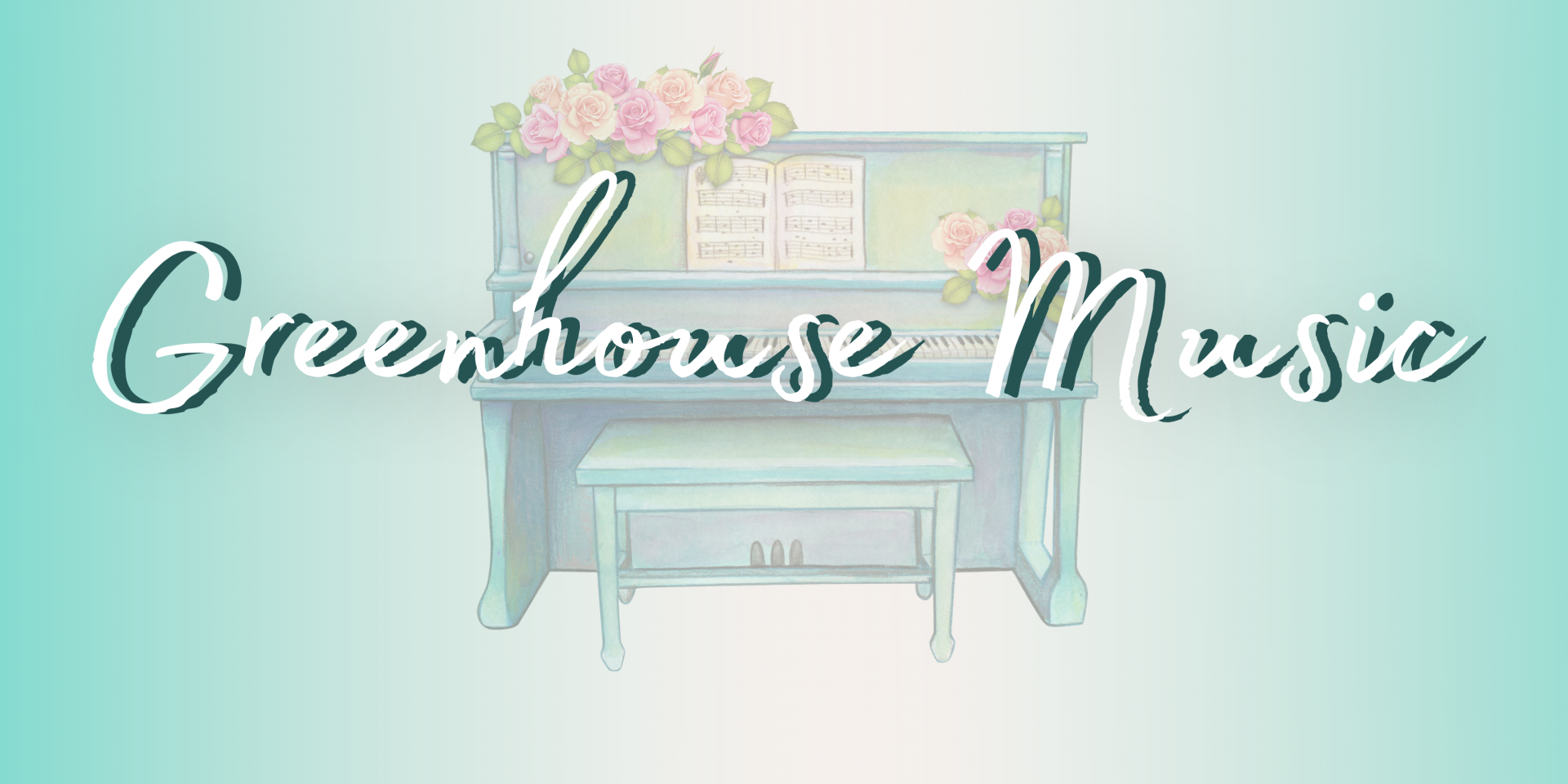Hello parents and welcome back to the Greenhouse Music Alaska Blog!
Last week I posted 5 of the most common questions I have encountered as a piano instructor, if you haven’t read it I encourage you to check it out. Today I would like to share with you 6 more helpful piano/ keyboard tips to help you help your student learn the piano. I know learning piano online can sometimes be a bit tricky. I want you to know my goal is to help both you and your student succeed. I love music, and love to teach music, which means your students' success is my success also. So please remember you can always email me with any questions, concerns, or even achievement celebrations!
Tip number Six:
Conducive placement of pianos and keyboards. To the best
of your ability make sure the location of your piano or keyboard is a room free
from possible disruptions or disrupting others. The number one thing that I see
when it comes to having a hard time practicing is an acoustic or electric piano in
a living room where other children or siblings in the house are also trying to
engage in a separate activity. This may be homework or watching TV or
conversing with others. This can be very distracting for new students and even
sometimes discouraging if they overhear any negative feedback. Bedrooms may
be a good alternative to shared living areas but you’ll want to be mindful of
whether or not that would work for your child. Wherever you place the instrument, remember to set boundaries that this is a piano location, this is what this is for, and when you sit down in this area you’re here to practice. Read on to tip number 7 for an alternative way to handle keyboards in multi designated rooms!
Tip number seven:
Headphones. If you have a keyboard, utilizing headphones
is a really easy way to give kids the time to practice without disruption. This
allows the student to be able to focus in on the music, their own breathing, their
posture, and their skill building without feeling like a nuisance and without any
concern or bashfulness of being overheard. You can find converters for keyboard
to headphones on Amazon and some electronic stores.
Tip number eight:
Use the excitement to establish good behavior and
prepare for the valley. In the beginning of lessons I find, across the board, it is
exciting for students to start learning piano. It’s the high of skill development.
They are so excited they’re learning new things, it’s so much fun for them to get
to play this song and that song. They are usually all in at that point. Then comes
the valley. At about a month or two in, it kind of starts to dive a little bit. This is
when they may start saying things like “I don’t know if I can do this”, “This is too
frustrating”, or “I don’t understand it”. This type of ,almost, animosity, is completely normal. They know it’s challenging ,they are learning something new, and it’s taking time, and with that almost always comes some growing pains. This however is the most important time. This is when the structure of being
consistent in this new habit will come into play. If you have been able to establish this habit of practicing 20 to 30 minutes a day then when you get down here you’ll really be able to help them practice, help them learn, and encourage them. Once you get through it they start to recreate that initial excitement and you’ll start to see them soar. This is the most amazing transformation in my opinion.
Tip number nine:
Use the parenting tools unique to your family to help your
child flourish. You know your child better than anyone. You know what works
and what doesn’t for them. Maybe you’re even struggling against a learning
disability, sensory overload, or perhaps even dyslexia. You have likely already
established a handy bag of tools and tricks that you use every day to help your
family function. Adapt these tools when learning music, and if you need more
ideas and inspiration there are a ton of resources available to help you , including myself. One bonus tool that I use are colored pom-poms. I place them on the keys to represent the different note names, and they are color coordinated to the sheet music. It’s a great learning tool especially with younger students , or even those that may struggle with dyslexia. If you have questions about this I always encourage reaching out to me if needed for help finding little extra ways to reach them at home.
Tip number ten:
Allow your student to challenge themselves and/or choose
the music. If you find your kid is getting bored of the music or if they’re
progressing really fast, say you feel like you can’t seem to keep up with them,
give them some options. I use piano adventures in my classes and on the back
of their books it shows you some of the different options they offer. They have
Disney songs, Hymnals, a “Favorites” ( with songs like “Hedwig‘s Theme” from
Harry Potter) and there’s even a Christmas songs book. The books are broken
down to each level. Generally I recommend they level down, if they’re halfway
through the book or less, because you want something that is going to be fun for
them if they’re getting bored. If you’re looking to challenge them I suggest
leveling to the same one, in an area of their interest. Either way, just remember,
you want to keep it fun for them while also encouraging growth.
Tip number 11:
Make music a family member. Find a way to incorporate music into your family. As an example, one of my favorite things that we do as a family is play music through YouTube on our TV. Currently my kids are four years, two years, and four months old and we all consistently look forward to and enjoy this
family time, and major bonus the two older ones can already identify instruments like cellos and violins! My mix includes the piano guy (one of our personal favorites to watch) and they have a variety of music including Disney favorites. It may only be 10 or 15 minutes a couple times a week but this is also a special way to connect with them and music while creating core memories. They will remember these activities, the playing or dancing together, and it will
permanently be a part of their foundation of love for music. So If you really want
your children to flourish in music, piano, keyboard, or otherwise, finding an
avenue of connection is something that will help them succeed.
So there you have it, six more tips to help your student learn the piano at home!
Don't forget to check out part one “ Todays 5 Quick Tips to Help Your Child Learn
the Piano '' if you haven't already. Also be sure to read my previous post “ Five
Budget Friendly Beginning Keyboards” if you’re shopping for a new one. As
always, thank you so much for reading, and I hope I’ve provided you with some
more helpful information. Email me with any questions, comments or concerns.
Interested in the latest updates, learning insights, and opportunities? Click
subscribe so you can stay up to date with our Greenhouse Music Newsletter!


